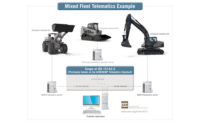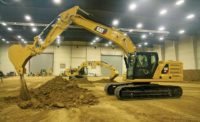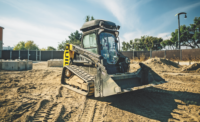Citing the growing and increasingly crowded field of grade-control systems and site-layout technology, the Association of Equipment Manufacturers (AEM) announced on Feb. 18 that it is working with the International Organization for Standardization (ISO) on a common standard for grade-control data sharing.
With manufacturers of earthmoving machinery often pursuing their own grade-control systems, and makers of robotic total stations and other layout equipment requiring use of their own proprietary data-management platforms, coordinating mixed-fleet operations on a jobsite can be a difficult task. From the radio signals between the sensors on earthmoving equipment, to the file formats used 2D and 3D terrain models, multiple incompatibilities and the need to maintain parallel systems can be real problems.
Sara Feuling, director of construction at AEM, says this confusion of grade-control systems is often par for the course. “Fleets containing multiple brands, along with general contractors using different systems than their subcontractors, is the norm on jobsites, if only because not every equipment manufacturer makes every single type of machine or technology that is used,” she said in the press release announcing the new AEM initiative. “This new standard will normalize data exchange at the interface between earth-moving machinery with grade-control systems and the site-information system.”
The standard, titled “Worksite Topographical Data Exchange,” will cover radio corrections, digital terrain models and overall jobsite information. It is limited in scope to earthmoving, including roadbuilding and site development. According to AEM, the working group for the standard says it plans to have a final rollout by the end of 2021.
AEM has not said if it will pursue similar data-sharing standards for other types of construction equipment and applications. AEM had previously worked with the Association of Equipment Management Professionals (AEMP) on a telematics standard for heavy equipment which received ISO approval in 2016. That standard has since been superseded by ISO/TS 15143-3:2020, which went into effect earlier this year. That standard covers the gathering and remote retrieval of telematics performance data for earthmoving equipment.






Post a comment to this article
Report Abusive Comment